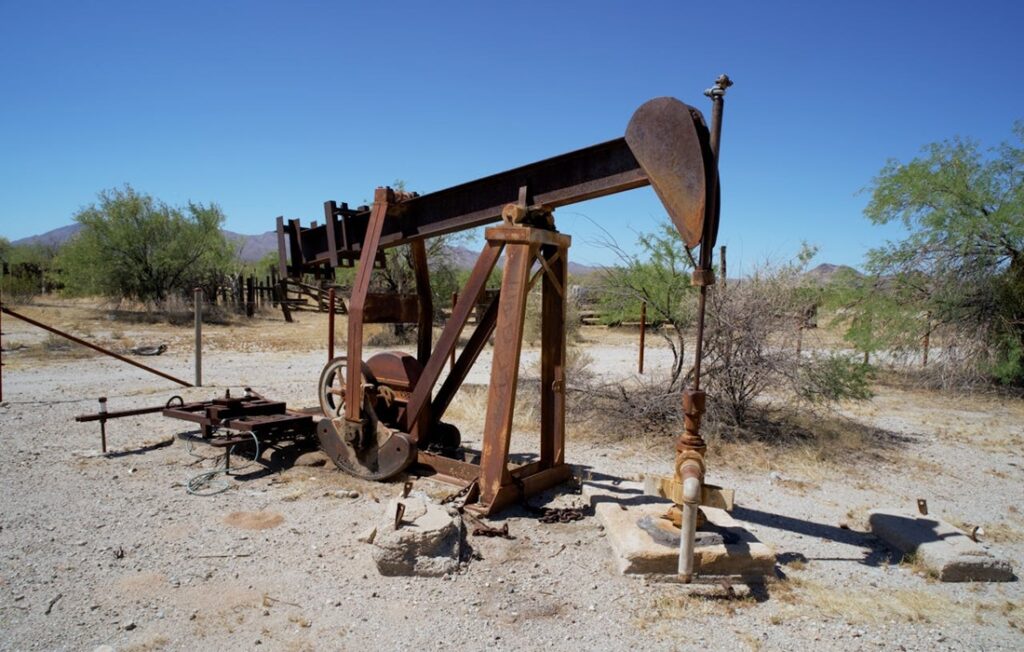There’s a lot of talk on and offline about the growing need for energy on a global scale, the aging nature of our energy grids, and how we can achieve this in a sustainable way that does not result in our planet warming to hazardous levels.
We’ve previously talked about how the environment is a human health issue, and how we source our energy is very much playing into worsening human health around the world—including right here in the United States. It’s time to take a hard look at the role of fossil fuels in current energy production, our aging energy infrastructure, and what the future of energy needs to look like if we want the best for everyone—because a healthier planet means healthier people.
The Current State of Fossil Fuel Energy
The United States currently relies on fossil fuels for more than 80% of our total energy supply. In 2024, renewable sources accounted for roughly 9% each of U.S. energy output, with nuclear supplying an additional 9%. These numbers, however, are changing fairly quickly, with many coal plants set to retire due to high operating costs. In fact, of the 210 remaining U.S. coal plants, 209 of them are more expensive to run than if they were replaced by new wind or solar energy.
What are fossil fuels?
According to a 2023 report from the International Energy Agency, 96% of new, utility-scale solar and onshore wind projects had lower costs than new coal and natural gas plants. Of these new renewable projects, 75% generate power at a lower cost than existing fossil fuel facilities.
When we look at price per Megawatt-hour (MWh) (1,000 kilowatts of electricity) the cost breakdown looks like this*:
Onshore wind: $37 to $86 per MWh
Utility solar: $38 to $78 per MWh
NEW combined-cycle natural gas plant: $48 to $109
Existing natural gas plant: $24 to $39 per MWh
Existing coal plants: $31 to $114 per MWh
NEW coal plants: $71 to $173 per MWh
Existing natural gas plants are the most cost-competitive with new solar and wind power. For this reason, it’s widely believed that these will be essential in the transition to renewable energy, meeting current and growing energy needs as more renewables are brought online.
But these costs are just those related to generating power—how we access the raw materials (such as crude oil) is another story entirely. The United States has a long history of importing foreign oil to meet demand, and this has resulted in two significant issues:
Radical fluctuations of oil prices due to global affairs such as wars, tariffs, and other conflicts.
U.S. refineries designed to work with foreign, heavy crude oil types (versus the light crude oil we produce in the U.S.).
“The inherent volatility of fossil fuels and the ways they expose consumers to geopolitical and climate risks drive consumer price volatility at both the gasoline pump and in household utility costs, contributing significantly to overall inflation... Of the past 12 economic recessions that have taken place in the post-war United States, 10 were preceded by large oil price increases (and all but three post-war oil price shocks have been followed by an economic recession).”
Roosevelt Institute
The Current State of Our Energy Grid
Let’s take a moment to talk about our energy grid. Originally developed in 1882, the United States electrical grid was not made with climate change in mind. And while it’s extraordinarily impressive, it’s also aging.
“Taken together, the grid has been called the largest machine in the world, comprising eleven thousand power plants, three thousand utilities, and more than two million miles of power lines.”
Council on Foreign Relations
The energy grid is made up of three core components: power plants (for energy production), transmission lines (for energy transport), and local distribution systems (for energy delivery). Over 70% of our power (a.k.a. transmission) lines are more than 25 years old, with a lifespan of 50 years.
As energy demand increases, so do the challenges of maintaining and improving the grid. To better accommodate renewable energy on the grid—and greater energy demand, in general—we need to expand both its capacity and flexibility (its ability to move energy around to different regions of the country to meet changing needs).
“Adding new generation quickly can be a challenge, hindered by supply chain constraints and efforts to make necessary upgrades to transmission and distribution systems. Nevertheless, utilities, grid operators, and local governments are looking to offset the growth in electricity demand by improving how they manage load through solutions like rooftop solar and battery storage—technologies that can generate and deliver energy on site.”
Pew Research Center
A few popular solutions for how to improve the overall grid system include:
Better Hardware. Improving the physical equipment that carries and converts power will increase overall safety and efficiency.
Microgrids. Rather than relying on transported power, microgrids are self-sufficient energy sources (such as rooftop solar panels) that can respond to energy needs at a local level. Bonus: because microgrids are not reliant on the national grid system to provide power, they can continue to work during main grid outages.
Energy Storage. Devices, like batteries, can help utility providers meet peak energy demand by storing generated energy for use when it’s needed. This can also be applied at a local level, where private solar and wind for homes, businesses, and even electric vehicles can provide energy back to the grid when it’s not being used, further lowering costs for consumers.
The Energy Elephant in the Room
The philosophy of the current Administration is “drill, baby, drill,” a slogan borrowed from the 2008 economic crisis when oil prices skyrocketed due to market volatility. And while the short-term gains of this approach might seem appealing as a “quick win” for energy, it very obviously doesn’t address any of the most pressing issues Americans face with energy security today (the “elephants,” if you will).
Increasing America’s coal and crude oil output does not address the fact that:
#1 - Significant energy infrastructure improvement is still needed.
The U.S. energy grid needs an overhaul. And, yes, it will be expensive. While some legislators and elected officials seem unwilling to make the call due to the high price tag, the result is energy security for all Americans. We can find the budget for it. Perhaps one less golden ballroom.
#2 - The U.S. will still be reliant on foreign oil—this doesn’t change that.
If the goal is to transition all U.S. oil refineries to be able to process the crude oil we produce, the cost would be enormous. In reality, it’s cheaper to import oil that can be delivered directly to refineries than it is to transport and process our oil across the U.S. Higher U.S. labor costs would also increase the cost of oil, gas, and petroleum-based products if we used only domestic oil. As a result, even with increased oil production in the United States, our economy will very likely still be heavily reliant on—and, thus, heavily influenced by—global affairs.
#3 - We will run out of oil.
Fossil fuels are a non-renewable resource. By definition, that means there is a limited supply. And while new technologies, such as fracking, have increased how much oil is accessible, current estimates point to a roughly 50-year supply of surface (accessible) oil remaining. As we deplete the most abundant pockets of oil, the more difficult oil is to access, and the more expensive it becomes to do so.
This is in addition to the fact that the demand for oil has been steadily decreasing year over year and will very likely continue to do so as more renewables come to market and changes to the global climate force our hand toward a more rapid shift away from fossil fuels. To be clear, this is not a hypothetical prediction—it’s already happening.
#4 - Climate change is damaging our already poor energy infrastructure.
Adding more fossil fuels to the mix (and, thus, increasing greenhouse gases) will only make this worse. Natural disasters like wildfires, hurricanes, tornadoes, and flooding (extreme precipitation) have endangered energy security for millions of people at a time, and these extreme weather events are only getting bigger and more frequent. Simultaneously, extreme temperatures (the past 10 years have been the 10 hottest since recording began in the mid-1800s) make energy security more important than ever, protecting people from extreme heat and cold.
#5 - The United States will be utterly left behind as the rest of the world shifts to renewables.
It’s already happening. The new “space race” is here—only, it’s all about energy. And, right now, China is the global renewable energy leader with nearly half of all operating wind and solar power worldwide. Other countries have also been making immense progress, leaving the U.S. in the dust. Not only is the United States falling behind from a technological standpoint, but also from an economic one. Who will we sell our surplus oil to in 20 years when there’s no longer strong international demand? What will we do then if our renewable energy supply is not sufficient? We’ll once again be reliant on foreign markets for our energy.
#6 - Most Americans support renewable energy, with strong majorities favoring wind and solar over fossil fuels.
The wider adoption of renewable energy is popular among all Americans—after all, who doesn’t want more reliable energy that doesn’t make them sick? In a 2023 Pew Research Center poll asking Americans about energy sources, 67% of respondents said the U.S. should prioritize alternative energy sources (i.e., wind, solar, etc.), and 63% said fossil fuels should be immediately or eventually phased out of use.
The Future of U.S. Energy
Right now, we’re making investments in the future of U.S. energy, and it’s important that those investments match the trends and trajectories of the world around us. Why? Because the United States is part of a global economy, and energy is very much a part of that. Investing in the wrong things now will set us back decades—and that’s not even considering the environmental ramifications that will absolutely play a role as health and natural disaster recovery costs increase due to worsening air and water quality, and increased wildfires, flooding, and other extreme weather.
Sustainability is often talked about in a moral sense—we should take care of the planet because it’s the “right” thing to do—and you can agree or disagree with that sentiment. But, in the case of U.S. energy, it is very much the practical thing to do. Investing in full-scale energy infrastructure improvements and the rapid deployment of renewables will enable us to continue to be a world superpower. It will reduce health risks for Americans across the country, rural and urban alike, and it will reduce overall taxpayer costs and lower energy bills. It will enable communities to be more resilient, our economy to be stronger and less volatile, and it will bring power to more people. Quite literally.
This is the energy future the United States needs.




